
Venice – the city of winding streets
Canals, gondolas, palazzos, Basilica di San Marco and the Rialto bridge – that's what comes to mind when you say "Venice" to someone. And they get a tired "yeah, that old tourist trap" look on their face. But Venice can surprise, and the genuine can be found even in the middle of a place where the sellers of Venetian masks outnumber the general population.
I recently visited Venice. I was there for less than three days but managed to experience quite a bit of it and get a feel for the city. Here are my notes from that stay. I've also included a map with the locations mentioned.
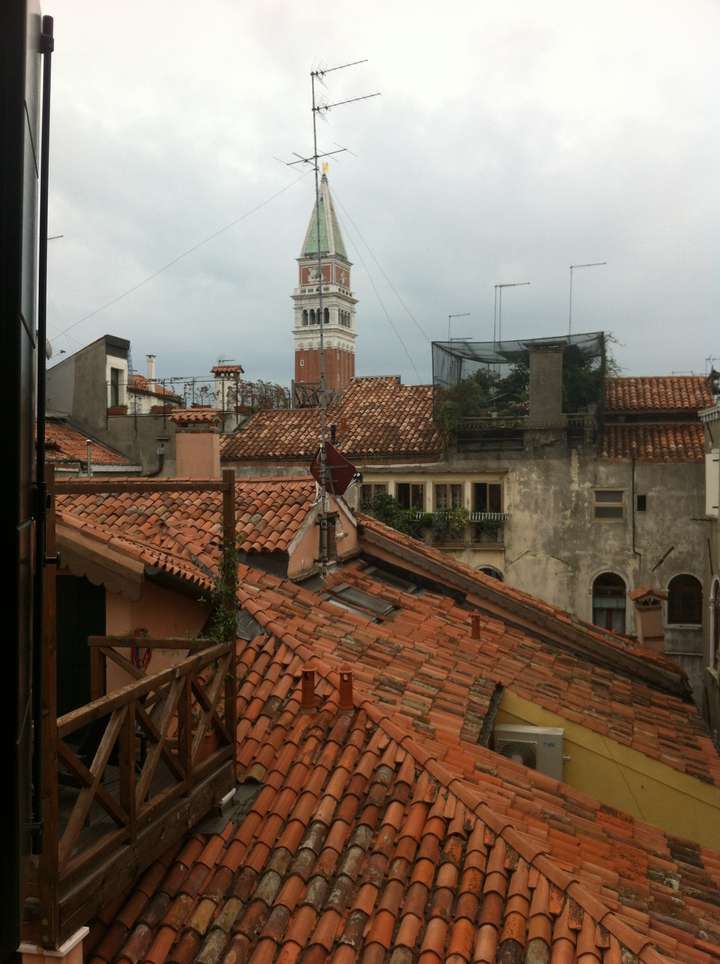
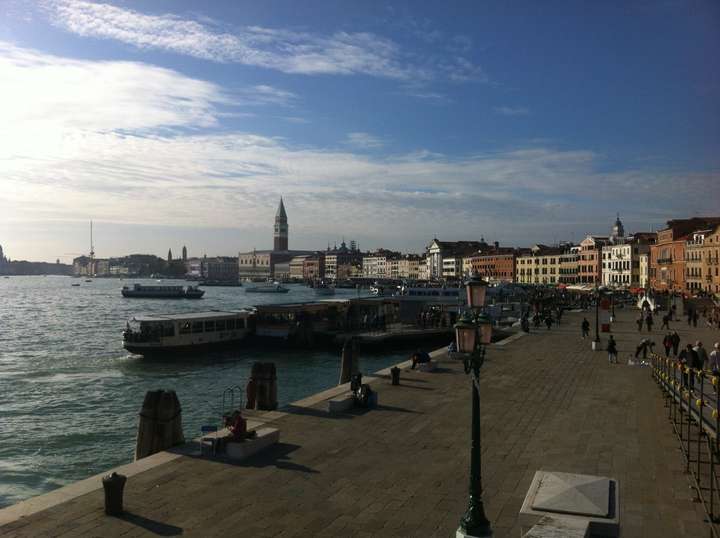
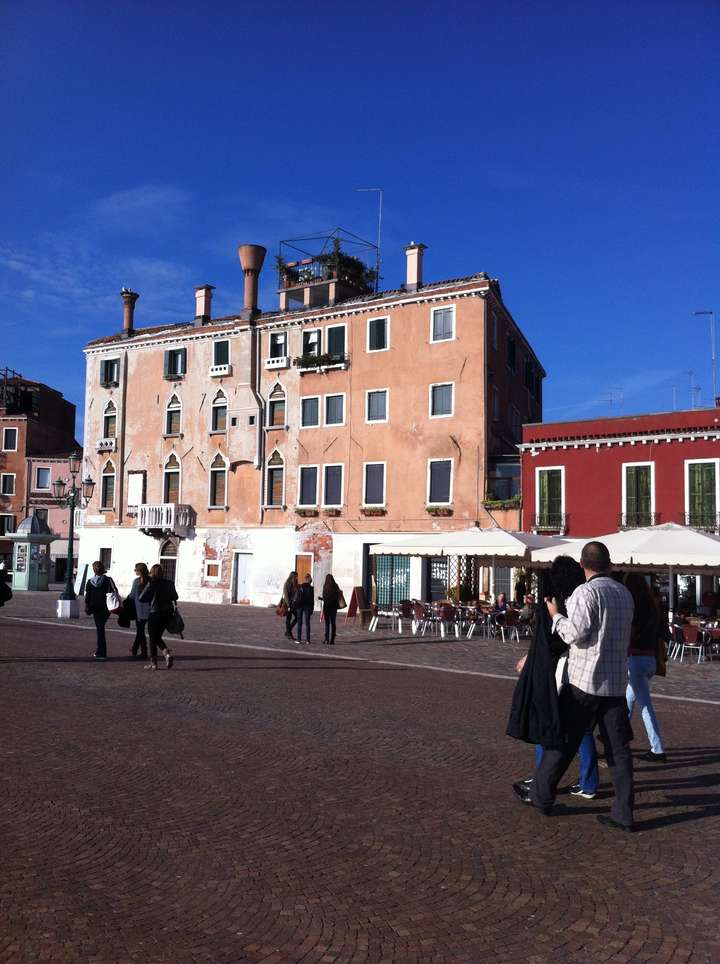
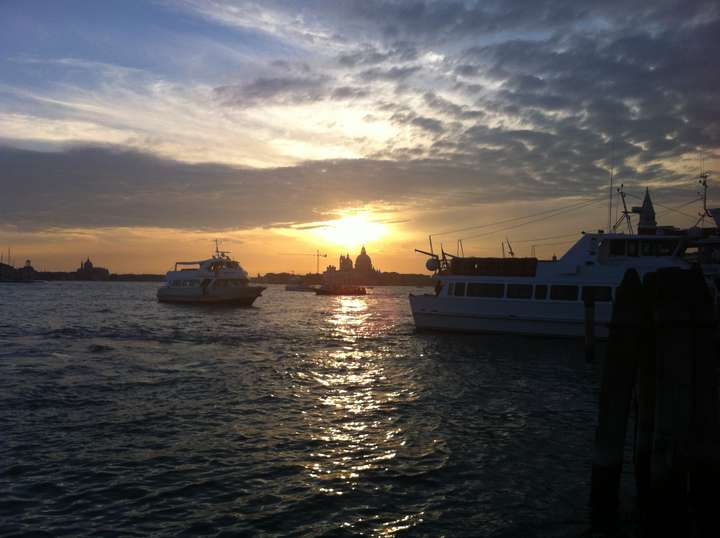
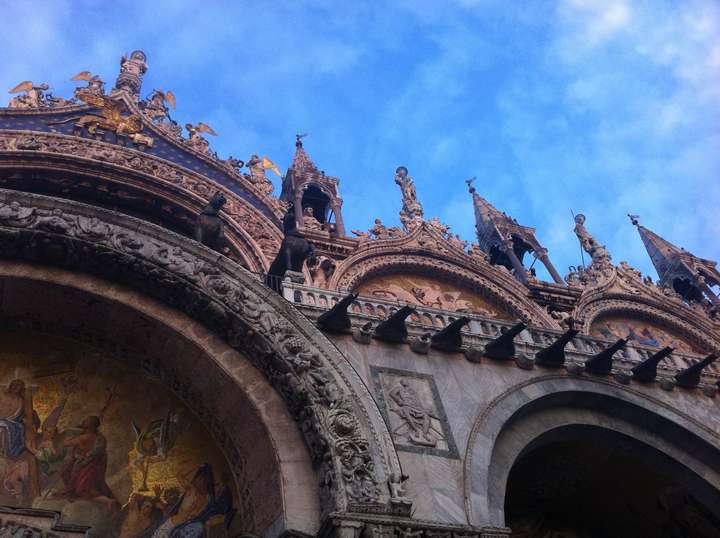
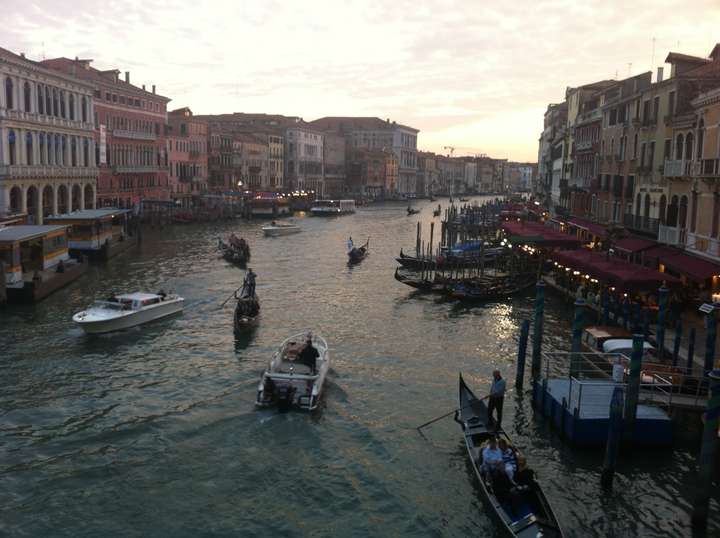
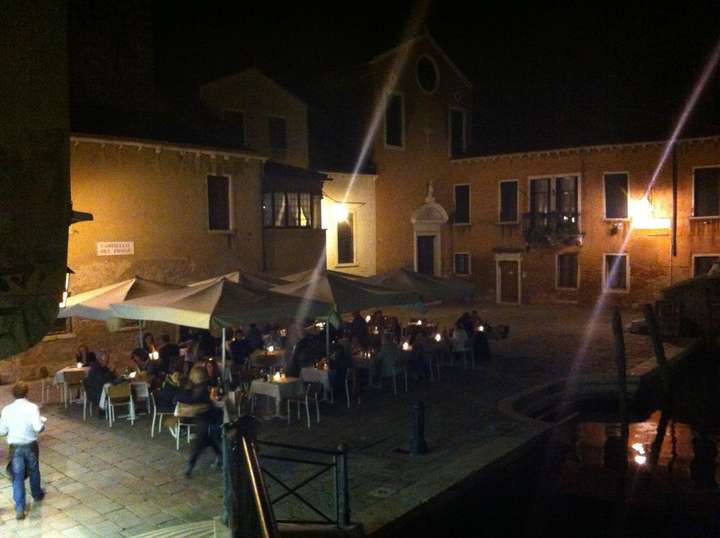
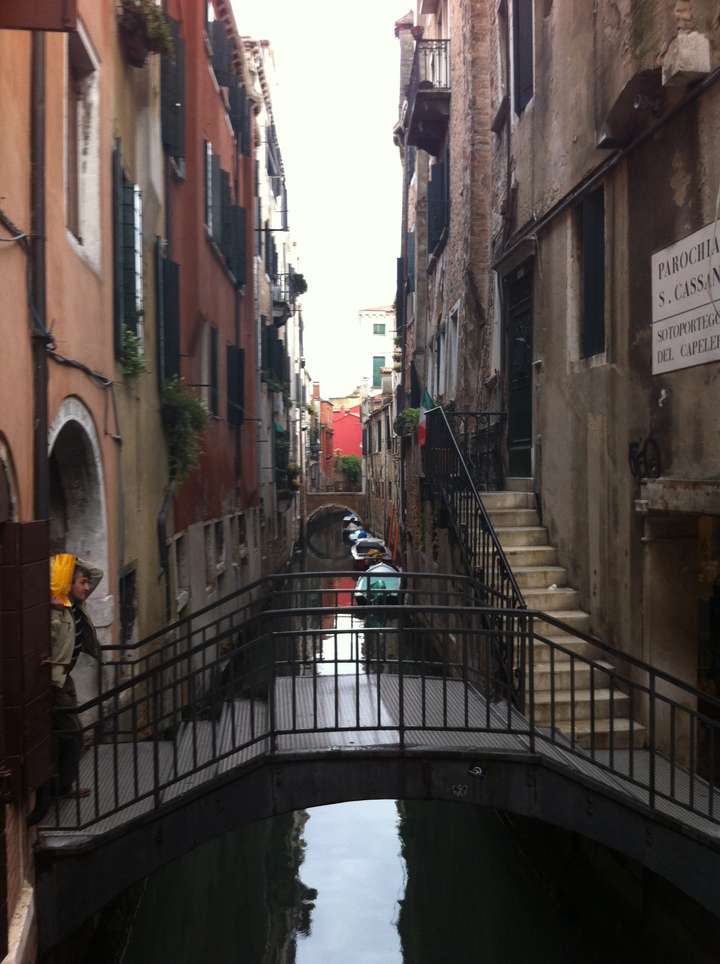
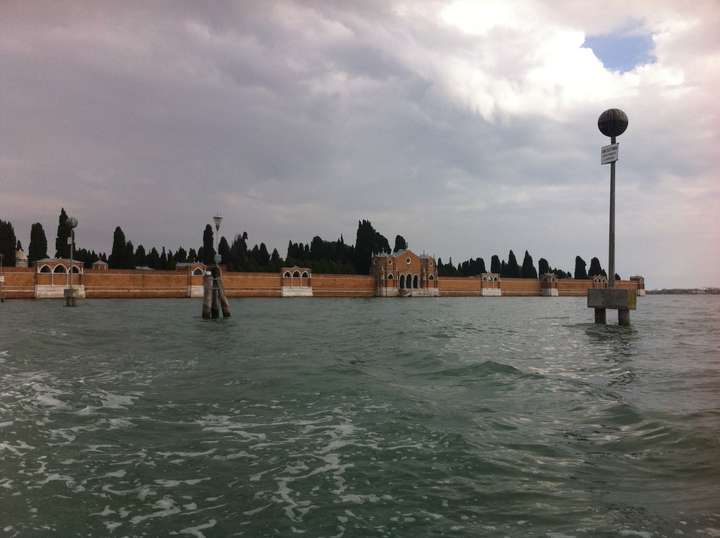
Arrival
I arrived in Venice on Friday by train. Stepping off the train and onto the platform at 8.30 I didn't really know what the city would be like. I'd watched the city during approach, the train moving over the several kilometer long bridge that connects it to the mainland. The view from there wasn't that interesting, the actual jewels would turn out to be in its center and south waterfront.
Train station
My hotel hadn't opened yet so I stowed my luggade the "left luggage" service in the far east part of the train station. I was a bit confused at first as "left luggage" makes me think of "lost and found" but it turned out to allow storage, as I had hoped. Five euros bought me five hours of storage and a lighter load.
Walking out of the train station, on the east side I ran into a massive group of people. Seeming to be activist students. What their message was I couldn't say. Police were gathering nearby, some with helmets and riot gear. I figured the police being used to this so I decided to get out of there quickly just in case.
Cafés
My first stop, a café. I popped in and bought a cappuccino. Even in a central location like this, prices were high but not murderous. Drinking at the bar would set you back €2, and outside under the eaves €3.50. I decided to pay some more and sit outside. Viewing the street, and street vendors rushing to bring umbrellas and rain ponchos out, as a light drizzle started to fall. Lucky for me, I was under roof.
Navigating the city
My best friend in a new city is my phone, and my iPad. I had downloaded the Guidepal app and viewed the Venice guide on the train. However I had not synced it for offline use. How this was done wasn't obvious from how the app was designed so it was no help until I managed to get Internet access in Venice. Fortunately the iOS map app retained enough data in its cache to provide an overview of the city.
Venice isn't laid out like most cities. In most parts of Europe cities have grown organically but still retain a pattern of streets, avenues and alleys. You can usually figure out where to go by looking at street numbers. In the US, even more so as almost every city seems to be planned according to strict grid. Why you run into such bizarre street names as "K Street" in Washington DC. Practical, yes. Imaginative, no.
Venice is totally different. This city has grown completely organically. It's not hard to understand why. Being considered an easily defendable site in the 9th century, settlers turned the mud banks, in the center of the lagoon where Venice is situated, into habitable land by driving poles of elm and oak into them. On top of those poles streets were laid, and over the centuries houses and palazzos built. Churches and basilicas erected. I am a bit baffled at this though. These are monuments to Christian faith and Jesus supposedly tells you not to build a house on sand. Imagine building on wet sand. And then house the remains of Saint Mark on top of it all. It's a mystery to me.
As a result of this organic growth streets don't exist in a grid and may end and begin with no seeming logic. The addresses work differently. I won't go into the details of how the addresses are organized but you can find information on it elsewhere. Luckily though, there are digital maps you can search and streets are generally not that long. And their names are unique.
I don't use roaming Internet access when abroad (you generally pay €20 per MB of data) so my first task was to find a store that sold prepaid SIM cards with a gig of data transfer or so. One gig did turn out to be more than enough. I used about 200 MB per day when checking email, Facebook and using maps and guides on my iPhone and iPad. The hotel had WiFi too.
Getting online
I'd been advised to buy a 3 ("Tre" in Italian) SIM but I ran into a Wind store before I found the Tre store. The Wind prepaid offered 1 GB of data (called "unlimited" here where people apparently don't use Spotify) for €20. I figured it was a decent deal. I plugged it into my Mobile Wifi portable router. After three hours I had data access. It took three hours for the network to pick up the SIM. I also had to show my ID to buy it. I think it's part of the counter-crime and terrorism measures to stop them from using anonymous prepaid SIMs to coordinate their schemes.
The districts of Venice
I decided to walk to the hotel which was in San Marco, of the sestieres of Venice. Neighborhoods, or districts, they divide Venice into seven parts. Each district has its own famous spots and sights. San Marco, where I stayed, has the Piazza di San Marci (St. Mark's Square) and the basilica, where everyone seems to go. It's also said to be the most expensive district so I would advise against staying there if you got time to plan your trip carefully and well in advance.
Transportation
What's good to have though is easy access to the water buses, or vaporettos. These go basically everywhere (route map) you'd need or want to go and while a ticket is a bit pricey, it's worth it. A three day pass sets you back €35. If you want to include access to rail transportation on Lido (and island east of Venice) and the mainland, add another €10. Using the water bus you can easily ferry yourself and your luggage from the train station to the hotel.
The water bus is one way to travel and the one that offers most value for money in my opinion. The other option is the water taxi. Don't be mistaken to think this is some cheap ride in the €20 - 50 range. These are limousines rather than taxis. I didn't go in one myself but I've been told prices can easily go beyond €100. It's a fashionable way to take in the city if you have the money and prioritize traveling in style.
There are several water bus lines. The regular service traverse Venice and surrounding islands. There's also the Alilaguna service which provides service to the airport and more. Going by boat to check in when I was leaving is the best ride to the airport I've ever had. It will cost you €16 if you buy your ticket on the boat, but it's worth it.
Gondolas, ah the gondolas. Isn't that how we all as kids used to imagine people traveling in Venice? The gondolas is a tourist attraction and not that expensive if my sources are to be believed. Some of the gondoliers even sing. I don't know if that costs extra, or if you have to pay to make them keep quiet. The gondolas go everywhere, or so it seems. From the grand canal to the small canals that cut through the city like a spiderweb.
I made my way slowly through all the streets and alleys. Some turned out to be dead ends, forcing me to backtrack. I had plenty of time and the only appointment was to meet up with my cousin in a few hours. After having walked over a drenched St. Mark's square and looked the basilica along with thousands of others I found my hotel. Luckily I could check in right away even though it was just around noon. I went back to the train station by vaporetto and back with my luggage. Sat down for a while to look at the maps and figure out where to go.
My hotel room offered a great view. Well the roof tops aren't all that interesting but the clock tower, Campanile di San Marco, was easily visible. And in the narrow canal below, a gondolas was passing by, the gondolier singing "Santa Lucia". "This is nuts!", I thought. Venice, where tourist brochure meets reality – and survives!
By now the weather had improved, and between the layer of thick gray clouds, specks of blue showed. I decided to check out the south waterfront and the parks. I'm not a big fan of houses and I need to seen greenery now and then. But even with all the houses, Venice never feels locked in or closes on you, like some cities do. The canals, smelling of the sea and not of pungent lake water, and the wind off the Adriatic Sea make the city breathe.
The south waterfront
I crossed Piazza di San Marco, and walked on out to the water's edge. I began by walking west, along Riva degli Schiavoni. This part was full of tourists and peddlers of all kinds of junk. I quickly turned and walked east instead. Here the quay wides and hundreds of gondolas are moored here at night. There are plenty of restaurants and beautiful locations here, just to sit down and relax. Walking far enough the tourists will thin out. I eventually reached the park where the Biennale takes place. It offered some much needed greenery and shade. Despite it being in October, it was a warm day. Perfect I'd say.
I met up with my cousin here a while later. We drank beer at a restaurant facing the sea. Paying Oslo (the most expensive capital in the World) prices: €17 euros for two beers with potato chips. But the view was nice. Then we continued on to get a feel for the city.
No cars allowed
My hotel was located near the famous Rialto bridge and this was a perfect time to experience the grand canal. The grand canal is the reverse S that runs through the city. It is in many ways the main artery of the city and it is the number one thoroughfare. As you probably have realized by now, motorized transportation in Venice goes on water, not land. In fact, cars are banned. I didn't see a single bike either. The lack of motorized vehicles makes Venice a very quiet and clean city with wonderful air. Perhaps one of the reasons to go here is to experience a city for people, and not for machines. It gives you an idea of how a city without cars feels like.
But even the boats go carefully and you never see a speedboat race down the canal, like you'd expect from watching too many James Bond movies. I cannot tell for sure but I believe reckless driving is heavily fined as wake waves cause damage and with the palazzos facing the canal, and many buildings dipping their toes so to speak, it's a matter of inches whether your entrance gets flooded or not.
The markets
We crossed the bridge and snapped some great pictures as we were doing so. The bridge itself is beautiful, save for the graffiti some creative street artist believe was the accent the bridge had always needed. But what's on the bridge couldn't be less genuine. This may easily be the largest collection of souvenir crap on this hemisphere. And it goes on for another two blocks north of the bridge before thinning out. If you make it through these stalls selling masks, plates, flags, t-shirts featuring Don Corleone and "GTA Venice", tons of glassware, toys, sea shells, miniatures of the basilica, umbrellas and more you will eventually find the fruit and vegetable market. It's located on the south side of the grand canal. And if you walk through it and go left you will find the fish market. Even if you're there on when it's closed, the smell will tell you when you've found it. This is supposedly a great experience early in the morning when the fisherman arrive with their catch.
Great location, great pizzas
Using my phone and now working data plan I tried to find the way to a pizzeria that was supposedly very good, and not a robbery price-wise. It took us some two hours to get there but eventually sat down at Il Refero. It was seven and dining doesn't really start until eight in Venice so it wasn't hard to get a table. The pizzas did not fail to impress. Completing the Italian experience with cappuccino and tiramisu on my end, and whisky on my cousin's.
By the time we were moving from there it was around nine thirty. My cousin being jetlagged needed to sleep so we found the nearest water bus stop.
Just drinks, nothing else
I went back to the hotel, changed, left my gear and headed out for a bar to see what the night life feels like. I decided to trust the guide again seeing as the pizzeria was a hit. I went to a place called Al Timon. Or so I thought. Turns out it was something else – its neighbor. Either way it was a good place. Simple and cool. It had beer and ale from all over the world. It's self-service so you grab the beer you want from the fridge and pay in the bar. I grabbed a bottle of one of my favorites, Brewdog Punk IPA. Paid €5, got a glass and sat down on a bridge overlooking the canal and enjoyed quality ale.
This place is located in the northern part of the city, near the district galled "Ghetto". I've linked to a map at the end so you can find these places I've mentioned. The word "ghetto" meaning foundry in Venetian (according to the text I read), was where the city's Jewish population was forced to live. The word "ghetto" has since spread to other languages.
Day 2
Next day I was up at around 9 or 10. Enjoyed a standard continental breakfast at the hotel. Nothing that impressed me but it was nutrition. This day I had some stuff to take care of – finding gifts. I got on the vaporetto heading south, intending to walk the west waterfront of Venice. I got off the water bus at Basilica di Santa Maria della Salute. First thing I did was checking out the basilica.
Venice is full of churches. There's a gazillion of them. And they're not just small churches. They're massive. Gothic. Made of marble. With statues. You can spend your entire time there just checking out these buildings, many dating back 500 years or more.
This one is no exception. Venice is a city of beauty expressed in stone. And it's nowhere as obvious as when seeing the amazing stonework and crenellations adorning its basilicas.
Southwest waterfront
I continued on west until I reached the point where the inlet of the grand canel opens. At the point of the pier is a white marble statue and the view offers the campanile, and the Doge's palace and the entire south waterfront. I then walked north on the southwest side. The sea was in a worse mood today and tried to steal back some of its lost territory. But Venice stood strong and the worse that happened was that I had to navigate some puddles.
This walk followed the Fontamenta Zattere Ai Saloni and was as beautiful as the last. Many restaurants and hotels dotted the facades facing the sea and Giudecca, the island to the south of Venice. I followed this quay until I reached the cruise ship terminal where I turned east following one of the bigger canals. I stopped at a small café, buying cappuccino. The clientele seemed mostly locals so I remembered to add this location to my map – trusting it to be one of the better cafés. In this area I did some unplanned shopping and found some really cool posters in an old antiquariat. I had planned to see my cousin in the afternoon and started to walk back to the hotel. Once there it turned out he would not be able to meet up as planned so I headed back out, this time with the intention of seeing a bit more of what lies west of Rialto.
Lost in Venice
This time, I really got lost in Venice. And wow, what an experience. I crossed the Rialto bridge again and followed bridges, alleys and streets. And walked by intuition and curiosity. Coming onto a square, crossing a bridge, turning right and suddenly being right in front of a church. On this haphazard and stumbling trek of the warrens of streets that is Venice, I managed to find gifts and some beautiful Murano glass cufflinks for myself. I eventually ended up on a square by a big church or monastery. Kids were running. Dogs barking. Locals smoking and talking. I ordered a true classic: a spaghetti carbonara. And I felt that this was at least a bit genuine. Nevermind the couple by the table next to me speaking some version of American resembling Texan. I'd heard more American English than anything else these past two days as Americans visiting Venice outnumber tourists from any other country.
Then heading back to the hotel, bouncing by my room, changing and back on the vaporetto to see my cousin's concert at the Biennale. My cousin, or technically speaking second cousin, Carl Testa was performing at the Biennale along with 12 others under the direction of composer Anthony Braxton. When I decided to go to Venice I didn't know Carl was going too. The day after I read a tweet by him saying "Preparing for my trip to Venice". I immediately texted him "Whaaaaat???". And I also got tickets for the show.
After the concert I joined Carl's friend Alberto, native Italian from Bologna, to see what other bars Venice could produce. We ended up at the Irish pub, drinking Guinness and Kilkenny and talking about the European Union, Italian politics, Latin and the Roman Empire.
Day 3
Sunday was my last day in Venice. I'd reserved a flight in the evening. Packing up my stuff I quickly decided not to go by bus to the airport via Piazzale Roma, the only place in Venice they allow cars and busses, but instead take the Alilaguna airport transfer from Rialto. The hotel reception staff was kind to let me store my luggage there while roaming the city. This day I'd decided to get out of central Venice and check out Murano.
Glass!
The island of Murano is famous for its glassworking. I read somewhere that the glassworkers on Murano were once threatened to be executed if they ever left the island. The glassmaking techniques were such an asset for trade-based economy of the Venetian republic that the secrets were worth killing for.
These days Murano lives off quoting tales from its glorious past in an attempt to sell glass to tourists. Getting there wasn't hard but an experience in itself. As everything in Venice seems to be. I took the vaporetto to Lido, then continued on to Nove, changed line and continued on to Murano. On the way we passed the cemetery. It's an island of its own with its own church and surrounded by tall brick walls. It's not off limits. The water bus stops here too.
The next stop is one of the stops on Murano. I got off the water bus and walked the main canal leading south to north. This canal is lined by shops selling the glass produced on the island. And it's some glass. Colorful. Glittering. With depth and inlaid with fragments of silver and gold. It's glass like it out of a fairy tale. Simple items like toy size cats and dogs, approximately 2 - 3 centimeter, sell for €5. Jewelry sells for €10 and more. The most expensive pieces are art decorations and chandeliers, some priced at €12,800. But watching is free. Just be careful you don't break anything. Strangely enough several stores features "no photos" signs. Maybe someone can explain to me why you don't want people to talk about and show others the beautiful items you sell and in turn drive sales.
So the glass isn't necessarily expensive and unless you want a custom made bowl (these start at €150) – you can find beautiful items for a few euros. And I think you'd also do right to haggle.
After walking around here for a while I took the vaporetto south back to Venice. I usually try to ride in the back. The view from the back of the boat is an unimpeded 180 degrees but it's a bit noisy as you're sitting on top of the diesel engine. I didn't mind the noise one bit.
Once I got back to Venice walked north-west to check out this part facing the sea, Unfortunately there isn't much to see here and the quay doesn't allow walking as there are several canals that aren't bridged, and a marina in the way. I cut left and chanced upon a cosy restaurant (Osteria All'Antica Adelaide) with super nice staff. Deciding to complete with encounter with Italian cuisine, I ordered a risotto. They were extremely accommodating and let met order it even though you usually need to order it for at least two, but letting my order piggyback on the order of a table nearby. On my way to the hotel I passed GROM, a small Italian chain that sells ice cream, which I'd been recommended. And it was a good recommendation, they serve the best pistachio ice cream I've ever eaten.
I got back to the hotel to grab my bags and print the boarding card. The hotel printed it for me without asking for a cent! Impressive and a sure way to get return customers!
Best airport transfer ever
The boat ride to the airport offered me a chance to see Venice from a distance. It truly is a city on the water, just like my home town Stockholm – often referred to as the Venice of the north. An apt description as the two cities resemble each other in many ways and walking one reminds you of the other. Something that was also hard to ignore walking the south waterfront as I did on my first day in Venice.
As for the airport. Not bad but not exceptional what airports are concerned. At least the airport restaurant pizza was better than most airport pizzas :)
FAQ
Based on what I saw and did during my three days I've tried to answer some questions I assume fellow travelers would ask.
What to do?
Get lost. No, not you. Come back! I mean in Venice! Just taking the first turn you find when you get there and see where it leads you.
Go inside the beautiful buildings and churches and admire architecture and art from many centuries.
Check out the parks.
Don't stress. This city imposes very few limitations and if you stay inside the city then you have very few timetables to worry about.
Go to Murano and look at the glass. It's beautiful and it's a nice ride. Whether you buy some or not.
Take vaporetto line 1 – aka the "tour bus". It passes by all the famous palazzos on the grand canal.
Where to stay?
You don't have to stay in Venice – there are hotels on the mainland and on Lido (the neighboring island, which also has beaches). And staying on the mainland is cheaper. Staying in Venice is more expensive, naturally. But it also means that you don't need to catch buses or trains. You can really get in vacation mode and just browse the place.
Where to go?
It was easy to fill three days just being spontaneous. That being said, it doesn't hurt checking out the destinations and ask in the hotel reception. Some of the tourist spots are actually quite interesting.
When to go?
Autumn and spring, they say. The cooler weather makes walking more pleasurable.
What to bring?
- A smartphone with an interactive map. This beats the map every time I think. The tiltable satellite map in iOS 6 was gorgeous on my iPad and let me get a great feel for the city and where I was. Furthermore, you can download all maps you need as PDF so you won't need to carry around a lot of paper. The "Find my Friends" app for iPhone lets you easily find each other again even if you decide to split for a while.
- Great walking shoes. Expect to walk a lot.
- A backpack to carry your gear.
- A travel wallet that you can keep somewhere safe, under your shirt or in the pant waist lining. Tourist destinations are always full of pickpockets.
Locations
I've created a map of the locations mentioned in this post:
Drink and eat
- Bar with beer from all over the world
- Small café where locals frequent
- Il Refalo pizzeria
- The Irish Pub
- Osteria All'Antica Adelaide
- GROM ice cream
Experience
- Produce market
- Seafood market
- Cemetery
- Murano (island of Murano)
- Murano Canal
- Stores sell glass and more
- The public park
- The south waterfront
- The southwest waterfront
Other places of interest
- Indian restaurant (didn't try) – offers a break from the Italian cuisine
- Tea place (didn't try)

Comments